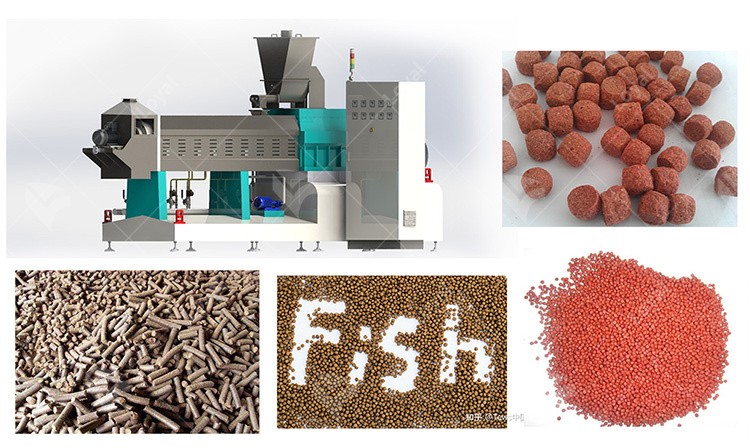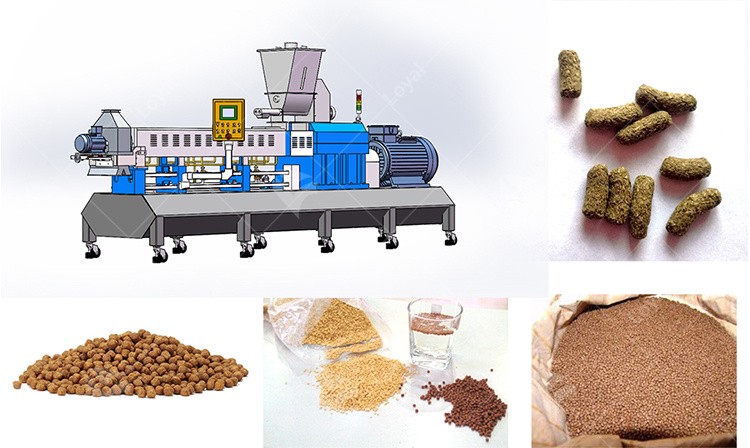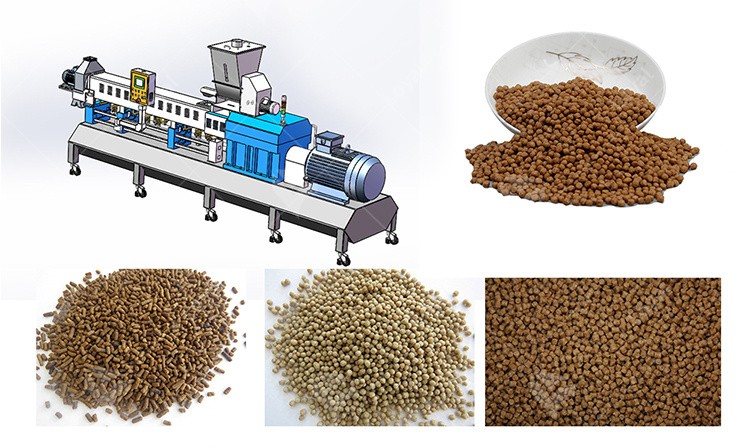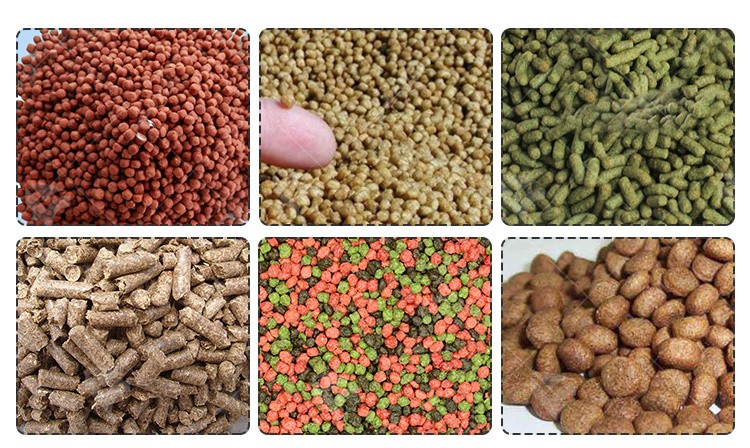
- Shandong Loyal Industrial Co.,Ltd.
- Macaroni Production Machine Instant Noodle Machine Biscuit Making Machine
Home> Company News> Fish Food Making Machine

Fish Food Making Machine
2023-07-21 15:40:13A fish food making machine is a specialized device used to produce high-quality fish feed for fish farms, aquariums, and other aquatic environments. The machine is designed to process raw ingredients into a nutritious and extruded fish feed that meets the dietary requirements of different fish species.Fish feed processing line is a set of mechanical equipment designed for producing high-quality fish feed. The line usually consists of several stages, including raw material preparation, mixing, extrusion, drying and cooling. The raw materials used in fish feed processing include fish meal, soybean meal, wheat flour, corn flour and other ingredients. The mixing stage ensures that the ingredients are thoroughly mixed to form a homogeneous mixture, while the extrusion stage molds the mixture into the desired size and shape. The drying and cooling stages help reduce the moisture content of the final product and extend its shelf life. A complete fish feed processing production line can be used to produce various types of fish feed pellets, such as buoyant, sinking, slow-sinking pellets.

The Flow Chart Of Fish Feed Manufacturing Machine
- Mixer --- 2. Scre Conveyor --- 3. Twin Screw Extruder --- 4. Air Conveyor --- 5. Muliti-Layer Oven --- 6. Hoister --- 7. Flavoring Line --- 8. Cooling Conveyor --- 9. Packaging

The Function Of Fish Feed Manufacturing Machine
The function of a fish feed manufacturing machine is to process raw ingredients into high-quality fish feed that meets the nutritional requirements of different fish species.
Here are the key functions of a fish feed manufacturing machine:
- Raw Material Processing: The machine is designed to handle a wide range of raw materials, including fish meal, soybean meal, corn, wheat, and other grains. These raw ingredients are processed and mixed together to create a balanced fish feed formula.
- Grinding And Mixing: The machine includes a grinder and mixer to finely grind the raw materials and ensure a consistent composition. This step is important for achieving the desired texture and uniformity of the fish feed.
- Extrusion: The mixed ingredients are then fed into an extruder, where they undergo high-pressure and high-temperature conditions. This process results in the formation of an extruded fish feed, which enhances its digestibility and nutrient availability for the fish.
- Shaping And Cutting: The extruder is equipped with different dies, which determines the shape and size of the fish feed pellets. The machine can produce pellets of various shapes such as round, cylindrical, and even customized shapes. The extruded pellets are then cut to the desired length using a cutting device.
- Drying And Cooling: After extrusion, the fish feed pellets are transferred to a drying and cooling system. This step removes excess moisture from the pellets, improving their shelf life and reducing the risk of spoilage. The cooling process also prevents the pellets from becoming too brittle.
- Packaging: Once the fish feed pellets are dried and cooled, they can be automatically packaged into bags, containers, or bulk storage for distribution and sale.
Overall, a fish feed manufacturing machine helps streamline the production process, ensuring consistent quality, and providing economically viable fish feed for fish farms, aquariums, and aquaculture industries.

Benefits Of Fish Food Making Machine
|
Costsavings |
Investing in a fish food making machine allows fish farmers to produce their own fish feed, eliminating the need to purchase commercially produced feed. This can significantly reduce costs over time, especially for large-scale fish farms. |
|
Customization |
Fish food making machines offer the flexibility to create customized feed formulations based on the specific nutritional needs of different fish species. This ensures that the fish are receiving a balanced diet, resulting in improved growth rates, better feed conversion ratios, and overall healthier fish. |
|
Quality Control |
By producing their own fish feed, farmers have full control over the quality of ingredients used and the manufacturing process. This helps ensure that only high-quality, fresh, and nutritious feed is being provided to the fish, leading to optimal health and performance. |
|
Versatility |
Fish food making machines can handle a wide range of raw materials, giving farmers the ability to use locally available ingredients or to experiment with different feed formulations. This versatility allows for better adaptability to changing environmental conditions and nutritional requirements. |
|
Waste Reduction |
Fish food making machines enable farmers to utilize by-products or surplus ingredients from other agricultural activities, reducing waste and promoting sustainable farming practices. |
|
Efficient Production |
These machines automate the feed production process, increasing production efficiency and reducing labor costs. They can produce feed in large quantities and with consistent quality, enabling farmers to meet the demands of their fish stocks more effectively. |
|
Improved Feed Stability |
Fish food making machines often include drying and cooling systems, which help enhance the stability and shelf life of the fish feed pellets. This reduces the risk of feed spoilage and ensures that the fish are receiving fresh and nutritionally balanced feed. |

The Parameter Of Fish Feed Pellet Extruder
|
Model |
Installed Powder (kw) |
Powder Consumption (kw) |
Output (kg/h) |
Size(L*W*H) (mm) |
|
LY65 |
70kw |
45kw |
120-150kg/h |
20000*1200*2200mm |
|
LY70 |
105kw |
85kw |
200-250kg/h |
22000*1500*2200mm |
|
LY85 |
160kw |
130kw |
300-500kg/h |
25000*2500*2300mm |
|
LY95 |
220kw |
154kw |
800-1000kg/h |
28000*2500*3500mm |

 Commercial Japanese Panko Bread Crumb Grinder Machine
Commercial Japanese Panko Bread Crumb Grinder Machine Japanese Bread Crumbs Processing Line
Japanese Bread Crumbs Processing Line Automatic Cookies Making Machines
Automatic Cookies Making Machines Fully Automatic Biscuit Making Machines
Fully Automatic Biscuit Making Machines